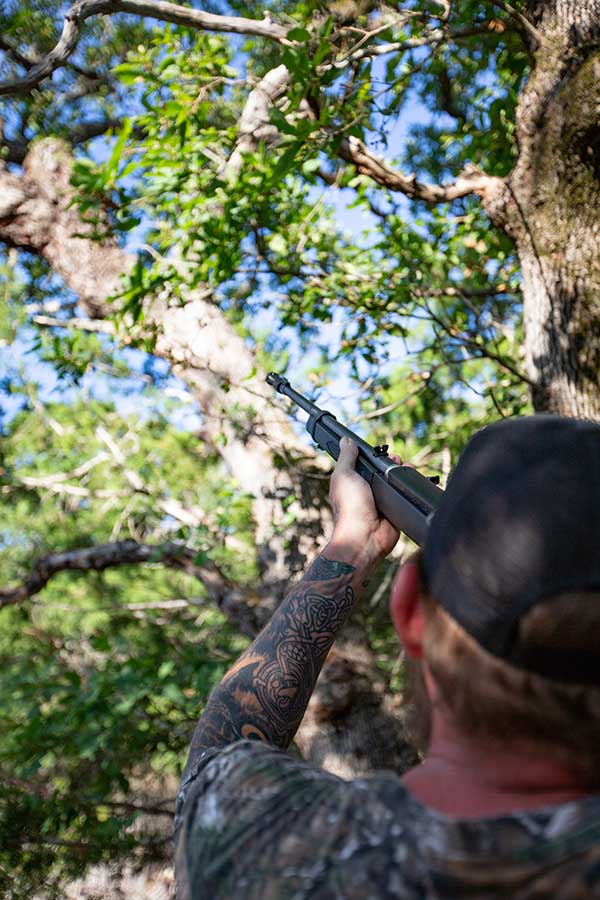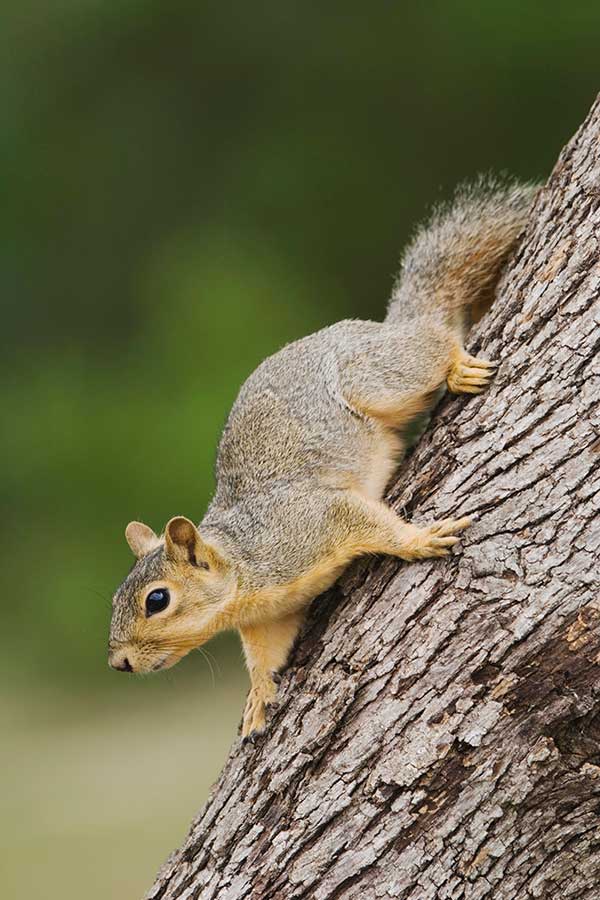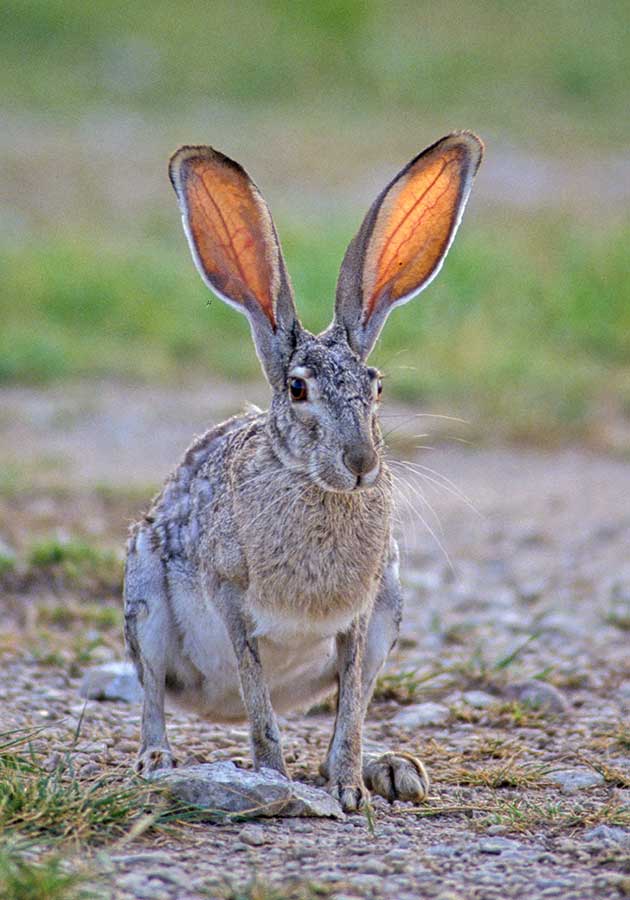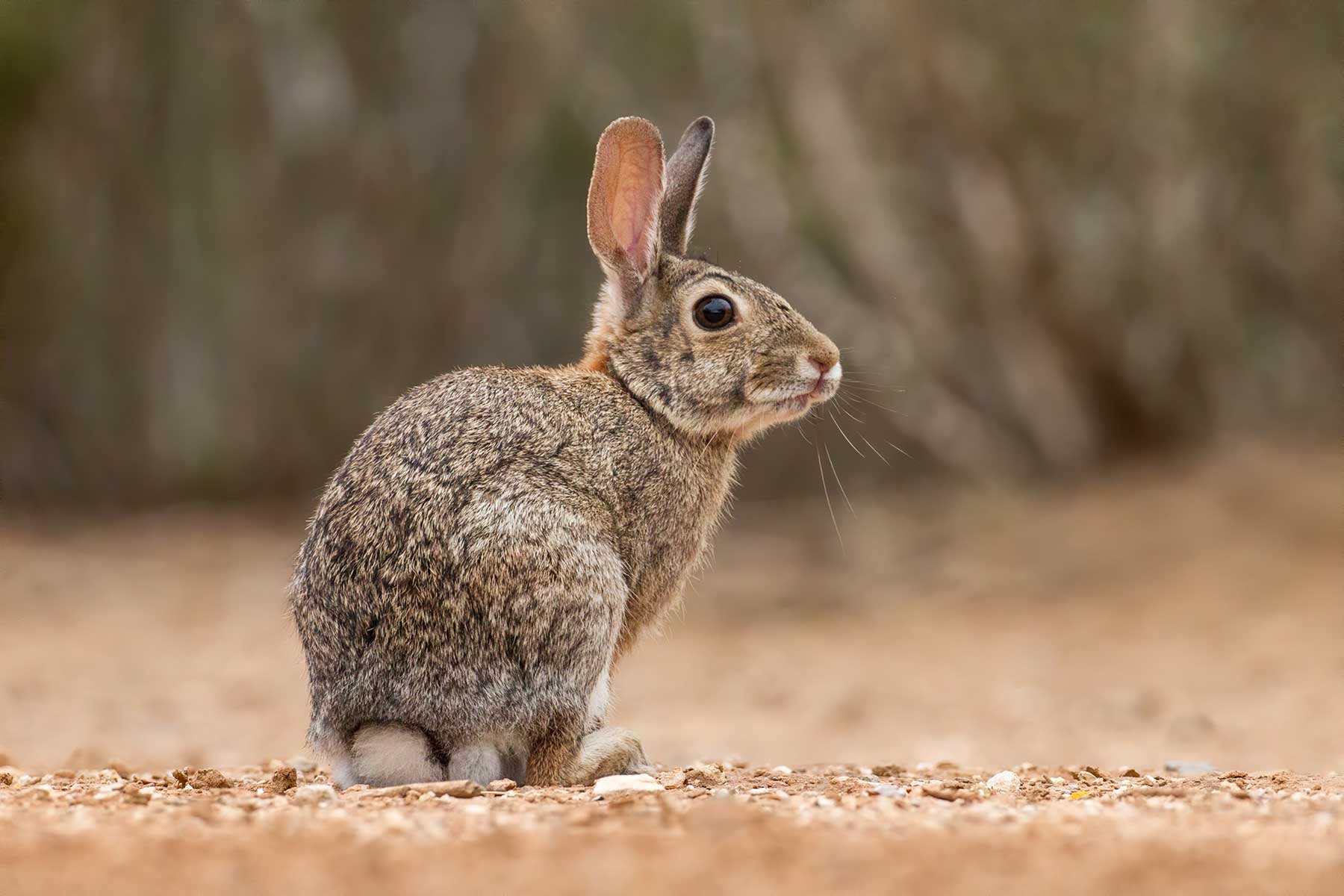
Mcxas | Dreamstime.com
The Scurry Game
Hunting squirrels and rabbits teaches lifetime lessons.
Small game is the entry point for many hunters. I'm no exception.
I grew up in Colorado in a family with nine siblings. Dad took us hunting, fishing and camping nearly every weekend, going after hares as well as waterfowl and upland game such as quail, grouse and pheasant.
Pursuing small game constituted a rite of passage into the hunting heritage, our way of life.
Legally, I could not hunt big game until I was 14. It seemed like the longest wait to me. The first game animal I harvested was a white-tailed jackrabbit in the central Colorado sage flats. I was elated to finally join the ranks of my older brothers as a provider of meat for the family dinner table.
My own son and daughter first hunted squirrels and cottontail rabbits. Though they quickly progressed to wing-shooting pheasants and dove and hunting bigger game like javelina, turkey and deer, my memories of small game hunts with them loom large many years later.
Starting out with small game hunting has many benefits. I was able to instill in my kids the right knowledge, safety habits, sense of ethics and skills before allowing them to move on to moving targets and larger game animals.
Small game hunting sparked their interest in animal habits, habitats and corresponding hunting techniques. I could show them how to field-dress a squirrel and then apply those same principles to a much larger feral pig or deer.
Another significant benefit of hunting small game is abundance. Texas, with its vast size and varied habitats, lays claim to the highest populations of most of the common huntable game in the country. Small game animals, especially rabbits and squirrels, are no exception. Not only are they plentiful, but regulations and seasons are more liberal.
Best of all, hunting small game is fun: the quarry is faster, smaller and more elusive. They scurry!
Today, hunters don’t target squirrels and rabbits like they once did. That’s a shame; properly prepared, they provide excellent table fare. Those freezer staples of the past have been replaced by larger cuts of deer, feral pigs and exotics.
According to the U.S. Fish and Wildlife Service, nearly 10 million small game animals were taken in 1955, along with just under 5 million big game animals. In 2016, those numbers flipped: small game numbers dipped below 3 million and big game harvest approached 10 million.

Earl Nottingham/TPWD
Larry Watson, a 20-year agriculture science teacher and hunter education instructor from Cass, is a longtime small game hunter from northeast Texas.
“Growing up Watson,” he says, “you were born to hunt, and the first thing you hunted was squirrels. We hunted with dogs; it was a family tradition.”
Watson talks about the dogs of his lifetime with a kind of reverence. His grandpa introduced him to hunting with the help of two squirrel dogs, Ole Ponto and Big Foot. He says Smokey was his best squirrel dog, a cross between a Labrador and a mixed-breed dog named Lou Lou (“The best squirrel dog I ever saw,” he says of Lou Lou).
Watson says the dogs chased the squirrels around the trees, putting the agitated critters in a position that offered a good shot for the hunters.
“There would be seven or eight of us, and the grown-ups would carry the guns,” Watson says. “We started with .22-caliber rifles, but then we used shotguns to shoot the gray squirrels, which could really run.”
Like with most hunting families, firearm safety was paramount. Small game hunting brought the lessons to life.
“My father always taught us to never shoot at a squirrel running on the ground,” Watson says. “There could be others hunting in that area, and they could be in your line of fire.”
Watson remembers being told to never take a shot toward the sky with his rifle, either, because .22-caliber bullets can travel a mile or more.
Small game hunters should always be sure they know what’s in front of and behind the target — preferably a hillside or landscape in full view, and plenty of acreage from which to safely fire a shot.

Sonja Sommerfeld / TPWD
No place beats East Texas for squirrels, especially if you’re an old-time hunter with access to private property.
“I’m fortunate that I don’t have to lease good squirrel hunting land since I have my family land,” Watson says. “It also pays to have good friends who will let me hunt.”
Public land opportunities — state and federal land holdings — are scattered throughout Texas, but hunters must abide by restrictions such as securing a permit (in addition to a hunting license) and following specific rules regarding boundaries, use of motorized vehicles, camping, fire-building and public consumption of alcohol.
“My favorite places to hunt are along old logging roads with a pine/hardwood mix of timber,” Watson says. “I also hunt in the bottoms, where you have no underbrush for easy walking. Squirrels like lots of vines.”
Eastern fox squirrels occupy much of Texas and prefer various woodland habitats, especially those in East Texas, also known as Squirrel Paradise. They’re also scattered throughout the central Hill Country, northern blackland prairies, southern brushlands and western lowland habitats, especially those with pecans, oaks, walnuts and other “necessary” trees.
In East Texas, fox squirrels and the smaller Eastern gray squirrels prefer mixed oak-hickory, irregular-shaped smaller acreages of timber and openings dispersed within “squirrel highways” or strips of forested tracts made up of pines, pecans, beeches, elms, maples and gums. They also frequent hammocks of oaks and magnolias, especially in poorly drained swamps and bottomlands.

Robert S Michelson
Eastern gray squirrel

Rolf Nussbaumer / Rolfnp.com
Eastern fox squirrel
Eastern fox and gray squirrels are considered game animals, with a bag limit of 10 in many East Texas counties and no bag limits throughout the rest of the state. They also must be hunted during daylight hours and only from October through late February and the month of May in East Texas.
Flying squirrels and other small game such as rabbits and hares are considered nongame animals, with very few rules regarding take, including no bag limits, no closed seasons and no length restrictions.
All hunters must buy a hunting license to hunt small game or nongame animals; to hunt on public lands, hunters must obtain an annual public hunting permit and secure a drawn permit or regular permit. (Download the latest Texas Outdoor Annual app at OutdoorAnnual.com).

Rob Curtis/The Early Birder
Black-tailed jackrabbit

Melody Lytle
Desert cottontail
Hunt eastern cottontails and black-tailed jackrabbits statewide, desert cottontails in the western half and swamp rabbits in the eastern one-third of the state. All these hunts can provide mentoring opportunities, especially for young hunters with small-caliber rifles or shotguns.
When my son wanted to hunt bigger game on a South Texas ranch, I took the opportunity to introduce my daughter, Sarah, to rabbit hunting. We moved slowly through the Brush Country, spotting cottontails. They’d scurry at first, then stop — giving us the time to ensure a safe background, then move into position for the best shot.
When spooked, jackrabbits take off and run fast and far, so shotguns are more useful for going after those long-eared, long-legged speedsters.
While you’re hunting pheasants and quail, especially in the Panhandle, rabbits and hares occasionally pop up in cropland or weed fields among the bird flushes. Is it OK to shoot at them? No, it’s best to stick solely to bird hunting around pointers and retrievers. Most guides either prohibit or highly discourage hunters from shooting at rabbits or hares while wing shooting since their dogs are nearby. Target rabbits and hares on another hunt; go without dogs or with trained rabbit-hunting breeds.
In East Texas, swamp rabbits are often hunted with trained packs of dogs such as beagles or hounds. Such a hunt provides a different, more traditional chase where friends get together; often one or two of the friends raise dogs and specifically hunt rabbits. After the hunt, a celebration typically ensues with photos of the take around tailgates of trucks and good Louisiana-style food to follow.
Whether you go after squirrels or rabbits, field processing is easy, and classic recipes are plentiful. When cleaning squirrels, make a small incision with a knife or game shears through the fur in the middle of the back. Then peel the fur back with each of your hands, simultaneously, toward and over each set of legs.
Watson uses a Skinner Ru, a device developed by Texan Walter Rudd in the ’70s to hang and skin squirrels. “We still use it, or something like it that we make ourselves,” Watson says.
Rabbits can be processed similarly. Always use gloves and practice slow, careful knife safety. As with squirrels, guard hairs tend to stick to the meat, so make cuts from the meat toward the outside (and away from your other fingers). Limit the number and size of cuts and maximize pulling the cape away from the back (loins), hind (hams) and front legs. Pull the entrails through the abdomen and discard them. Immediately place the meat on top of ice to begin the cooling and aging process. Some folks keep the heart/livers, along with backstrap and quarters.
To avoid wildlife diseases and other parasites, small game is best hunted during the winter months. However, if you can dress and cool the game quickly, other months can be just as productive while providing healthy meat. With rabbits, it's important to read up on rabbit hemorrhagic disease, especially hunters in West Texas (see tpwd.texas.gov/huntwild/wild/diseases/rabbit-hemorrhagic).

Fotografiche | Dreamstime.com
Roast rabbit portions
Many hunting families stew squirrel and rabbit in crockpots, for hours, then debone the tender meat, and add their own favorite vegetables, spices, dumplings and stock.
You could probably start a hearty debate about whether squirrel is better stewed or fried. Luckily, there’s plenty for both, so we don’t have to choose.
“Sometimes, I just like plain old fried squirrel,” Watson weighs in. “Just flour, salt and pepper to taste — with homemade biscuits and good ol’ milk gravy.”
We call those “cathead biscuits” with “sawmill” gravy where we come from. We also call them “finger-licking good” when we’re called in to dinner.
Steve Hall manages hunter education for TPWD.
Related stories
» Like this story? If you enjoy reading articles like this, subscribe to Texas Parks & Wildlife magazine.

